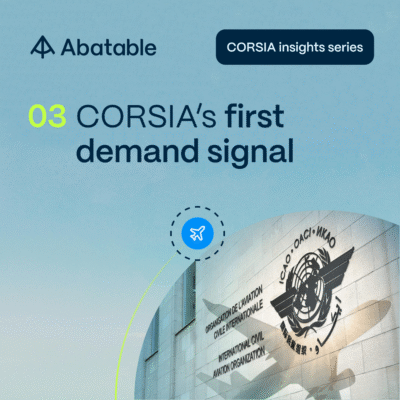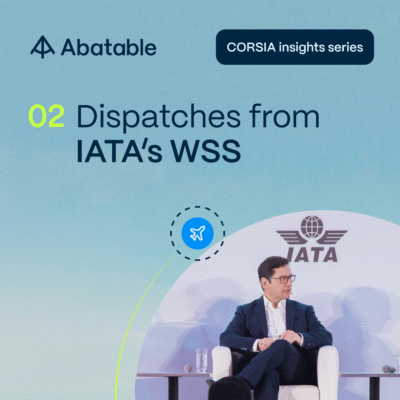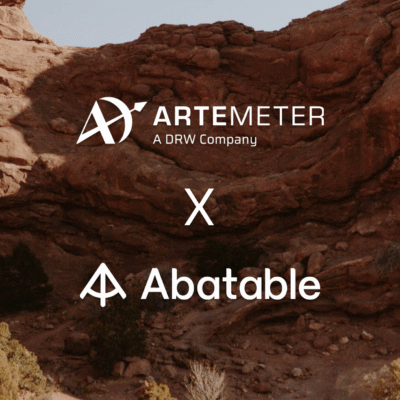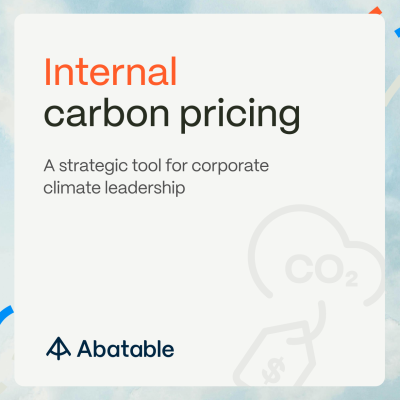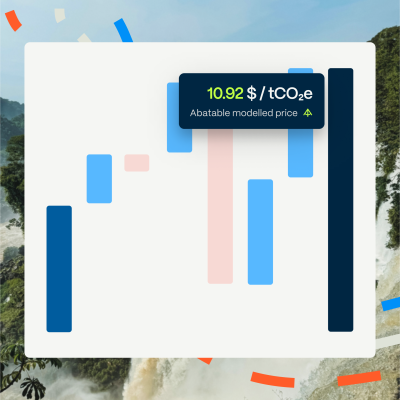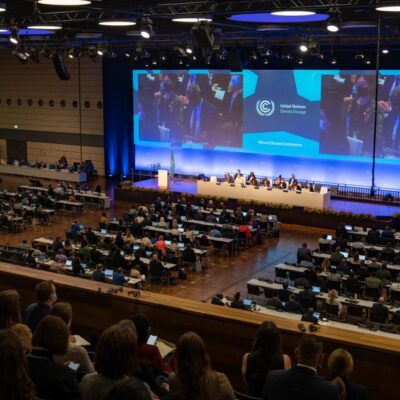As we head into COP28, Abatable’s Policy Manager Greg Lydka Morris outlines what the conference is aiming to achieve and what to look out for on carbon markets and Article 6.2.
It is just three days till the twenty-eighth United Nations Framework Convention on Climate Change’s Conference of the Parties begins in the United Arab Emirates.
COP28 is taking place in Dubai’s Expo City from 30 November to 12 December (or likely later if previous COPs are anything to go by). It will ultimately provide a reality check on where the world is on fighting climate change, following COP21’s Paris Agreement.
Abatable will be there, keeping an eye on developments and how they relate to the future of carbon markets. In the meantime, here is the first of two blog articles outlining the state of play, what to expect and what we’ll be looking out for in Dubai.
The main events: Global Stocktake and loss and damage
Broadly speaking, there are two main items to be worked through at COP28.
The first is to outline a response to the results of the Paris Agreement’s first Global Stocktake (GST). The GST is a sort of check-in to review global progress towards achieving the Paris Agreement’s target of keeping global warming below 2C, and ideally below 1.5C, above pre-industrial levels. It will review mitigation efforts to reduce greenhouse gas emissions, evaluate progress in adapting to current climate change, and assess the means of implementation – including finance and technology transfer from more- to less-developed countries.
The GST will set a foundation to work on to inform countries’ new and updated climate pledges, or nationally determined contributions (NDCs), which they will need to prepare over the next two years ahead of COP30.
This is all part of the Paris Agreement’s five-year ratchet mechanism, whereby countries are encouraged to update their NDCs in recognition of the fact that existing NDCs do not add up to the emissions reductions needed to stay below 2C of warming. According to the United Nations Environment Programme’s latest Emissions Gap Report, released just last week, fully implementing today’s unconditional NDCs would result in temperature rises of 2.9C. Hence, there is work to do to strengthen commitments following the GST.
Dive into country NDC ambition and country-level Article 6 readiness in Abatable’s carbon market country policy profiles.

How the Global Stocktake fits into the COP process. Source: The Global Stocktake at COP28, Nature Climate Change
Another central topic at COP28 will be the operationalisation of the Loss & Damage Fund which, following a historic breakthrough at COP27, is being set up to support developing nations deal with the impacts of climate change. The Fund is contentious, and developed countries have been reluctant to support it as it could open them up to significant liabilities from climate damages tied to their historical emissions.
It was agreed in early November that the Fund would be initially administered by the World Bank. Key governance rules and the assertion that the Fund will provide financing in the form of grants and highly concessional lending were also agreed upon. Key questions remain, such as:
- Who are the eligible beneficiaries?
- Who should be paying into the Fund? and
- How much should they pay?
Stakeholders at COP28 will push for answers to these questions.
So, what about carbon markets?
When it comes to carbon markets, it’s all about Article 6 of the Paris Agreement.
Article 6 provides the framework for voluntary cooperation among countries to amplify their NDCs, while advancing global sustainable development goals, through mechanisms to exchange emissions reduction efforts between each other.
This year, Article 6 will not be at the forefront of COP negotiations. Discussions moving forward the operationalisation of the mechanism will instead be held amongst technical audiences.
Article 6.2 recap
Within the Article 6 framework, Article 6.2 emerges as a pivotal element. It introduces the concept of Internationally Transferable Mitigation Outcomes (ITMOs), which allow for the international transfer of greenhouse gas emission reductions or removals between different countries.
The mechanism enables a buyer country to financially support projects in host (seller) countries that actively reduce emissions. In exchange, the host country agrees to forgo the emission reductions from these projects in its own NDC, transferring this right to the buyer country which can subtract it from its NDC instead.
To avoid double counting and ensure environmental integrity, ‘corresponding adjustments’ are applied as an accounting mechanism to remove the credits from the host country’s national registry and NDC, and correspondingly add them to the buyer’s registry.
One of Article 6.2’s distinguishing features is its decentralised nature. Unlike Article 6.4, which involves a standardised framework overseen by the UNFCCC, Article 6.2 grants participating countries a significant degree of autonomy. This autonomy extends to the types of emissions units that can be traded, with each nation responsible for designing its policy mechanisms and defining criteria for ITMO transactions.
Host countries, particularly those in the Global South, stand to gain substantially from ITMO transactions. These deals could facilitate investments into otherwise unobtainable low-carbon projects (making them additional) and generate co-benefits such as job creation, technology transfer and capacity building. For buyer countries, ITMO transactions provide a means to fulfil their NDCs by financing projects in regions where emissions reductions or removals can be achieved more cost-effectively.
While there is no single standardised governance structure for Article 6.2, a general framework is outlined to guide the process. The key elements of this framework include:
Authorisation of ITMOs
The host country must authorise the transfer of ITMOs to another party. If a third-party buyer is involved, both countries in the bilateral agreement must issue letters of authorisation.
Monitoring, reporting and verification (MRV)
MRV is crucial for measuring greenhouse gas emissions reductions over time, reporting findings to an accredited third party, and verifying the report for certification and issuance of carbon credits.
Recognition of transfer
Both the host and buyer countries must issue credits in their domestic registries. The host country issues domestic units for the mitigation outcomes and cancels them, while the receiving country re-issues them as ‘international attestations’ in its registry.
Corresponding adjustments
This accounting framework is designed to prevent double counting and must be reported by both countries to ensure transparency.
UNFCCC requirements
Countries engaging in ITMO transactions must submit an initial report upon the authorisation of an ITMO. They are also obligated to record annual information in the Article 6 database and include regular information in Article 6’s biennial transparency report, which details environmental and social safeguards. The information provided in these reports will undergo a centralised technical expert review
Challenges to overcome
Despite the promise of Article 6.2 to enable countries to meet the goals in their NDCs efficiently, several uncertainties and challenges remain.
The first is that host countries must balance their investment opportunities through Article 6 with the likelihood of meeting their own NDC, to avoid overselling. If a host country transfers too many mitigation outcomes it may be left with an insufficient amount of capacity to reach its own NDC.
To avoid this, a host country can create a ‘whitelist’ of project types that can be traded, for example only from sectors in its conditional NDC. Several countries have already started publishing whitelists for this purpose.
Second, very few supplier countries have developed national legislation and frameworks for the issuance and authorisation of Article 6 trading, and this will take time. This will include defining what they will authorise, who will authorise trades, and establishing processes to comply with reporting requirements.
Third, there will be significant additional administrative costs associated with Article 6. Fees may be set up to cover these, for example fees for signing up to the national registry, and fees to authorise an ITMO and apply a corresponding adjustment.
To get more information on country whitelists, shares of mitigation outcomes and legislation progress, view our carbon market country policy profiles.
In summary, while much of the focus at COP28 will be on establishing a finalised framework for Article 6.4, the list of bilateral 6.2 agreements continues to grow. With the first ITMOs expected for transfer in the coming months, Article 6.2 has real potential to be a mutually beneficial instrument for countries to achieve their emissions targets.
Keep an eye out for our follow-up blog post where we will dive deeper into the Paris Agreement’s Article 6.4.
Want more? Our carbon market country policy profiles provide deep dives into policy developments on a country level, including Article 6 and Paris Agreement commitments.




